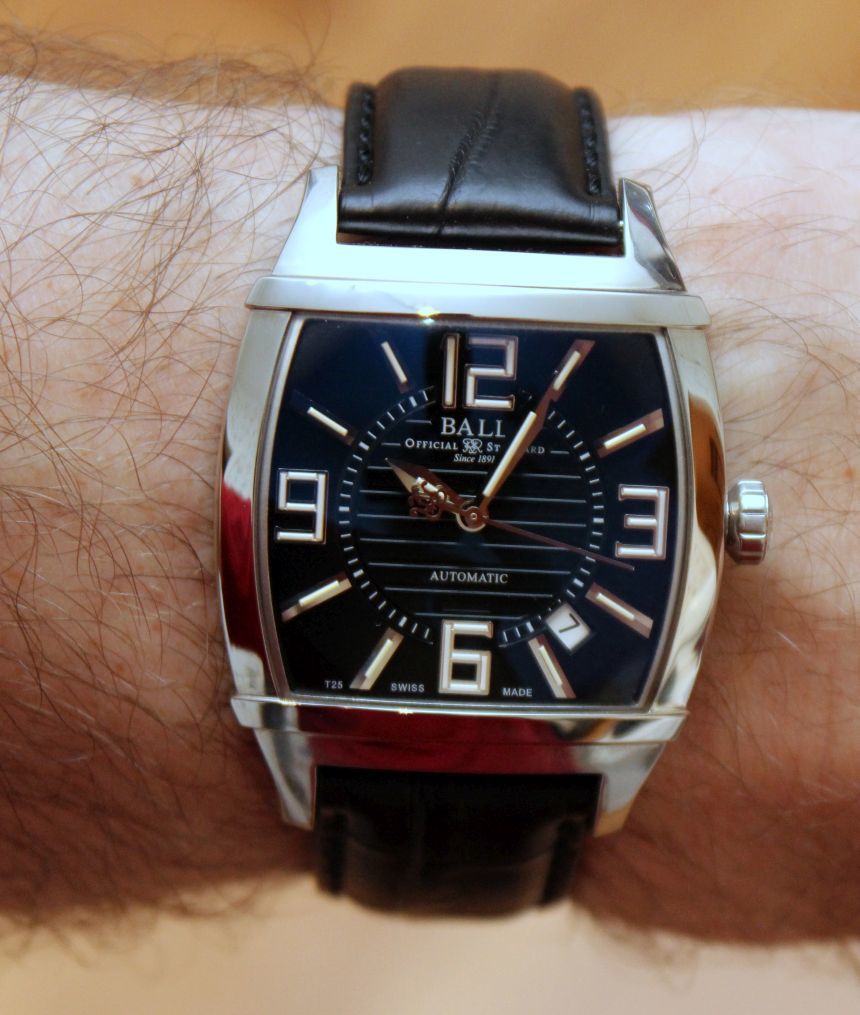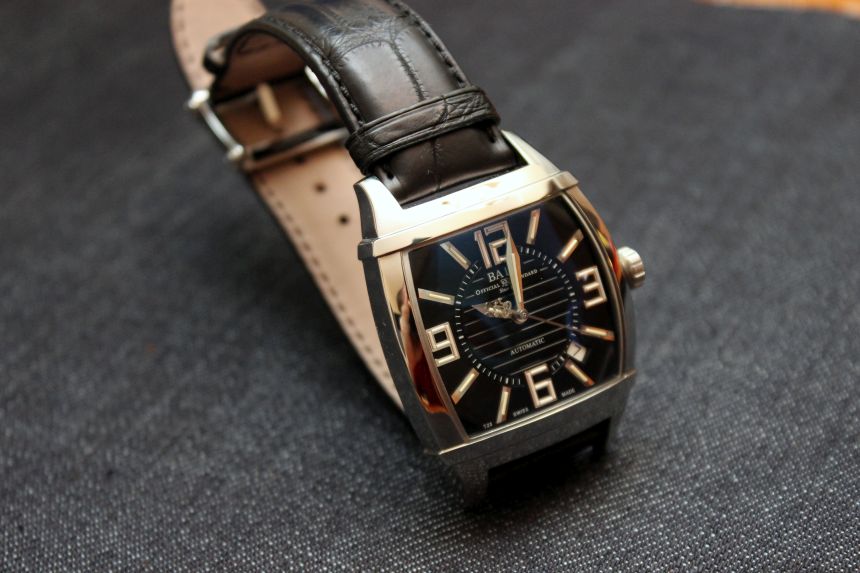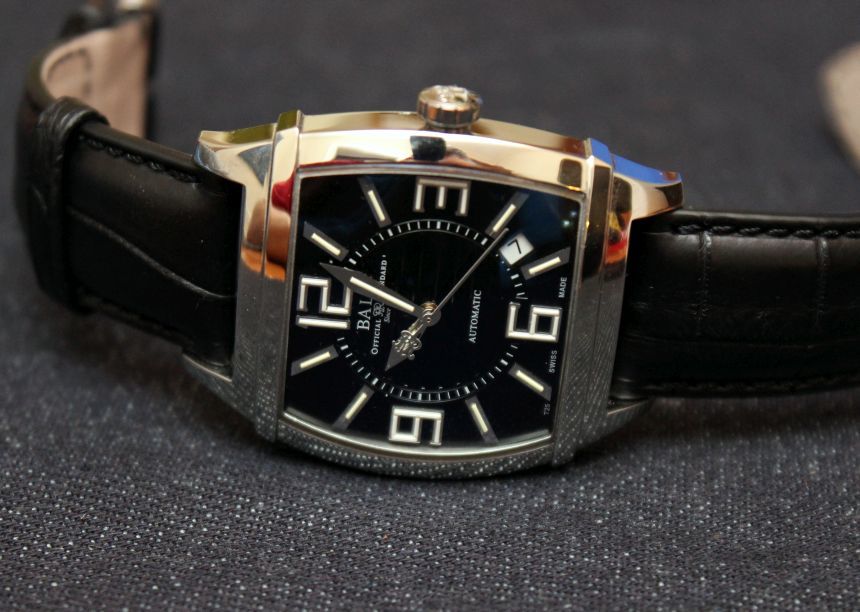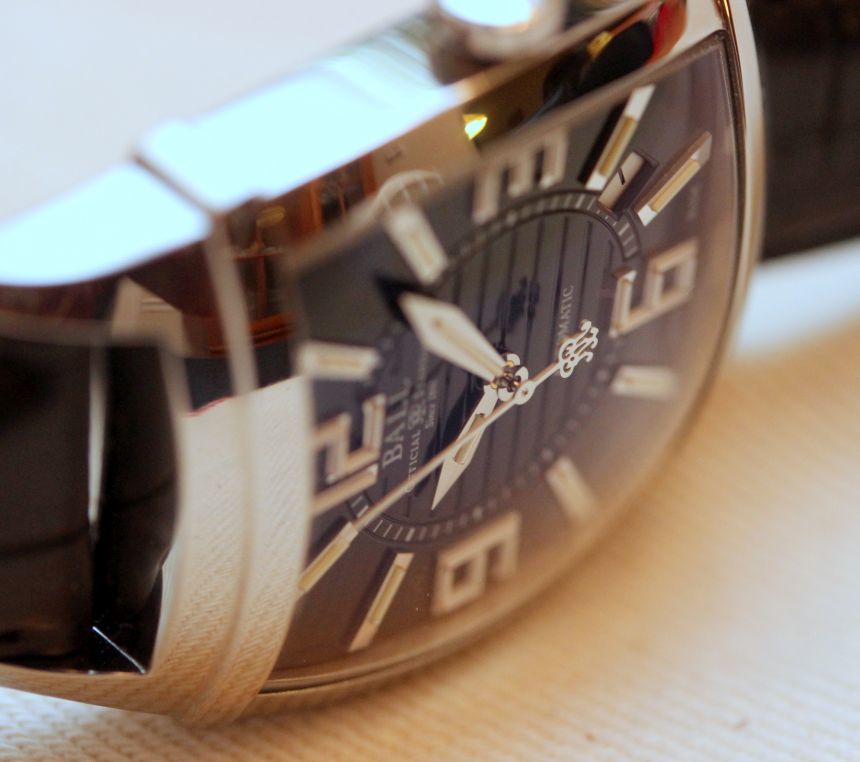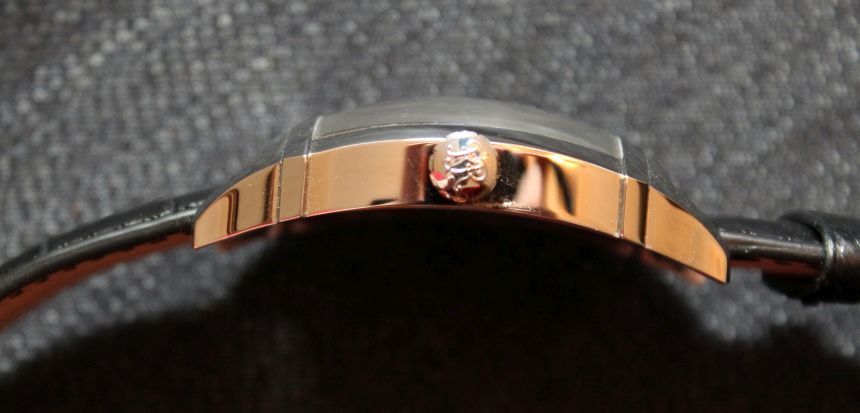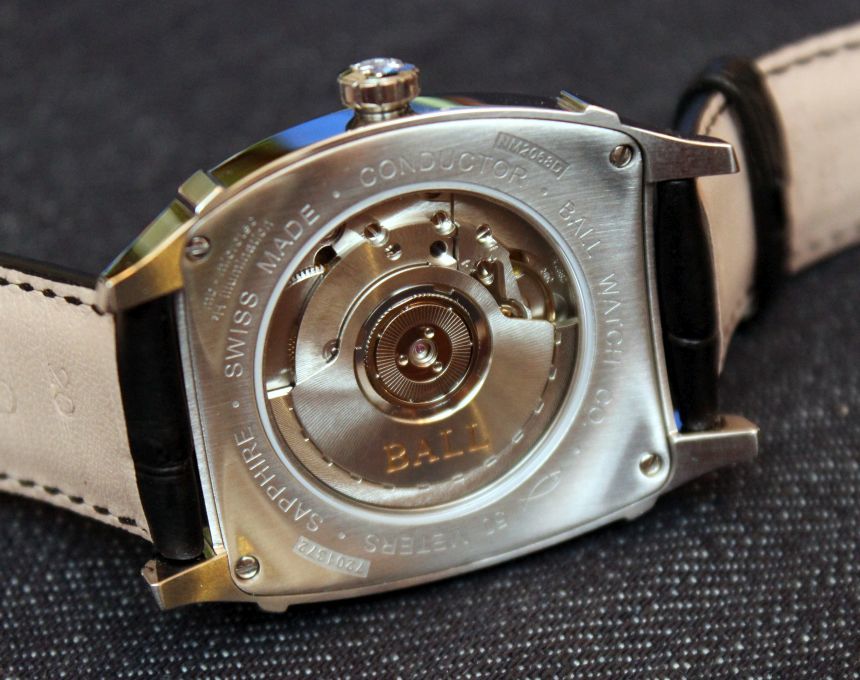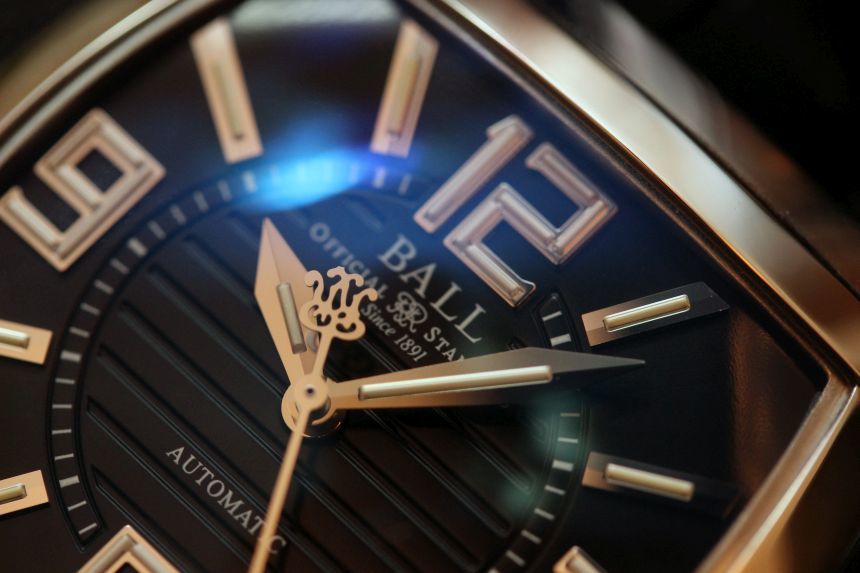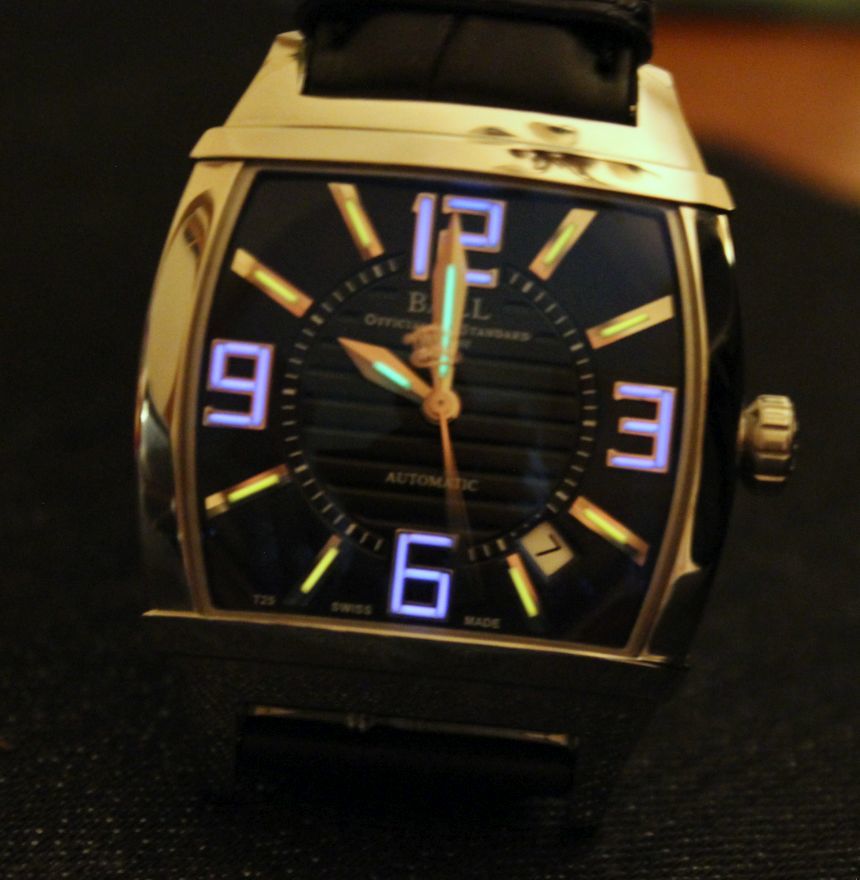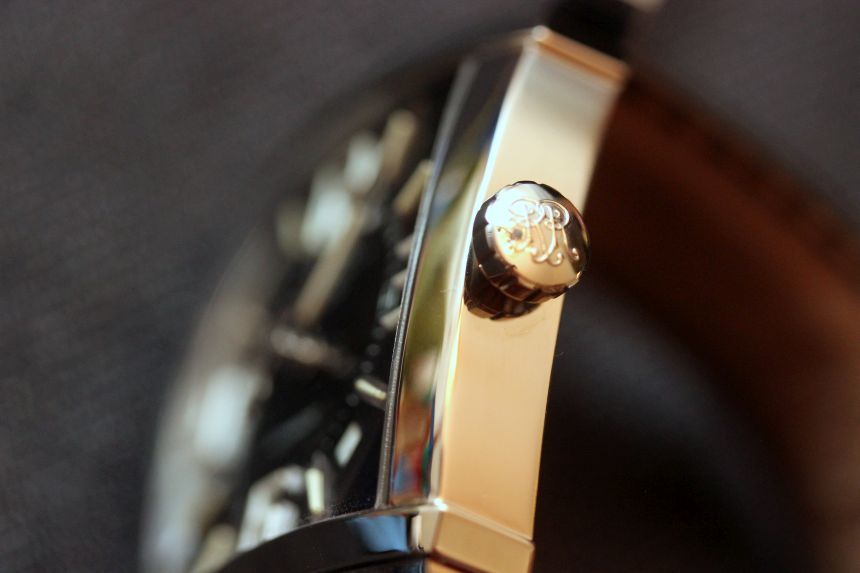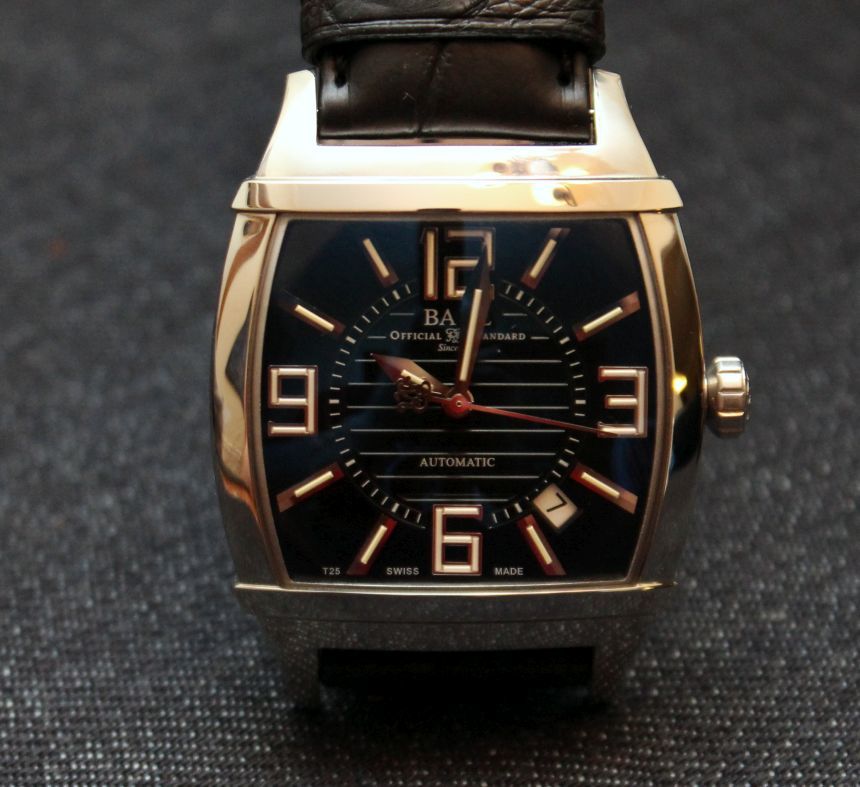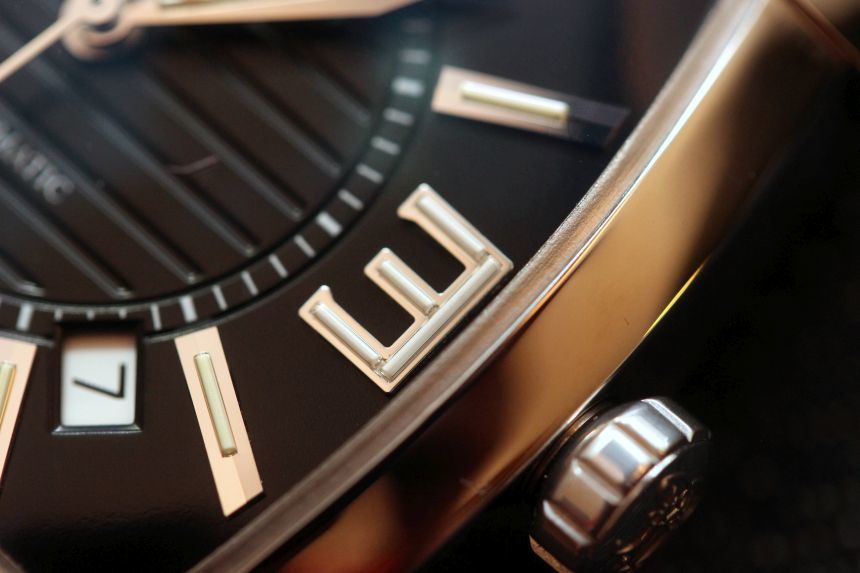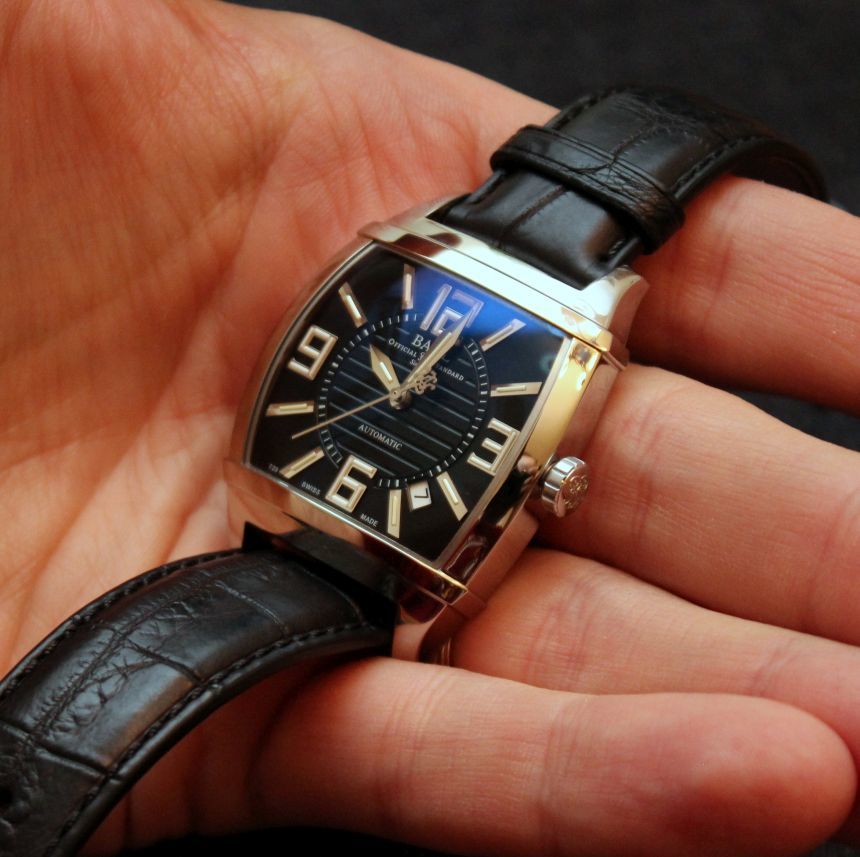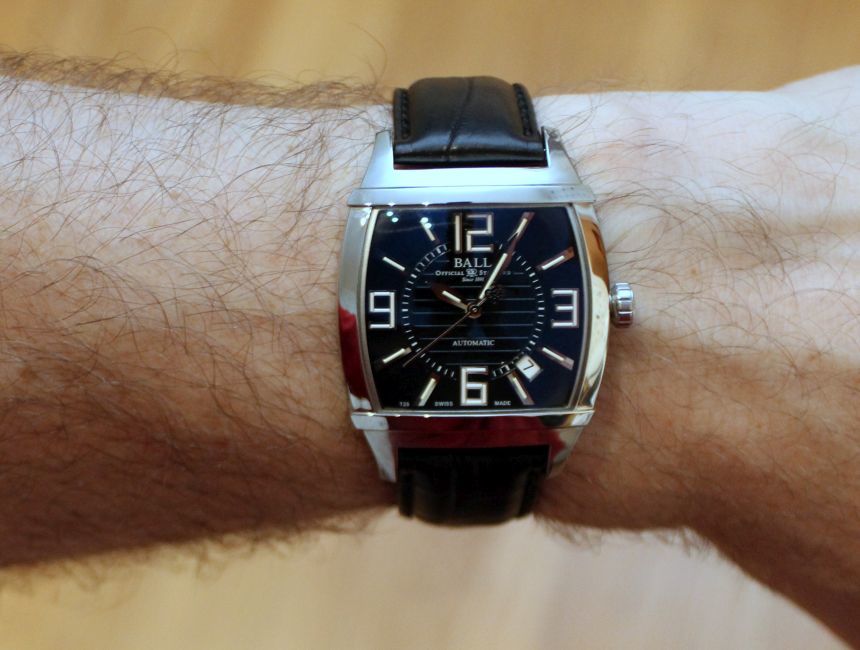By now, you are surely aware of the ties Ball Watch has to the railroad industry (in a nutshell, they created the first watches certified for use to keep the trains on time and not running into each other). That is reflected in the names of the watches that they have created (for instance, the Engineer and Fireman lines). What about the person who keeps things orderly in the passenger compartment – the conductor? Turns out, Ball has not left that position behind in their naming. Today, we will be reviewing what seems to be an overlooked slice of their collection, the Ball Conductor Transcendent.
When you compare the Ball Conductor Transcendent to the rest of the lineup, it is definitely the odd man out. While other watches give off an air of rugged durability, this Ball Watch Trainmaster Worldtime Chronograph Replica instead shoots for a more elegant feel, albeit one that is in a case shape you simply do not see in dress watches (or, at least, I have not). At first glance, you might thing the steel case was a simple square one with a bit of rounding. As it turns out, it’s actually a bit more rectangular leaning (37.5mm by 47.5mm), and has a lot more curves hiding in it than a quick glance would reveal.
The most prominent of those comes courtesy of the sapphire crystal, which the brand labels as a TV screen style. And you know what? I see it – it definitely has the shape and curve of an old CRT type of screen. It is an interesting look, and it helps the case height to slope down side to side and top to bottom, making for a more compact fit on the wrist. The other “hidden” curve helps in that regard as well, and shows up on the reverse of the watch.
Yes, that is right – the Ball Conductor Transcendent has a curved case back. This is something I have not run across a lot, but it definitely helps to snug the watch in tighter to your wrist. For a more compact dress piece like this, I think the curves (front and back) work quite nicely in terms of the styling, and, of course, help to get the watch out from under a cuff (and back in) without any issue.
Even with the curved caseback, you do still get an exhibition window through which you can see the Ball RR1101 automatic movement. This is due to the fact that the center of the case is actually flat. You can pick that up on the dial side as well. Taking a closer look at the dial, you see that the corners actually angle down (to accommodate the curvature of the case), leaving you with a sort of “hidden” circle that is visible on the dial. This is, obviously, due to the fact that the movement itself is not curved. I rather liked the look, and frankly, it is not all that noticeable (the corners bent down) unless the light hits it just right.
The rest of the dial is rather well-balanced, with the the larger numerals (so the tritium tubes can be affixed) taking a prominent place. Quite obviously, between the numerals and indices, seeing the time day or night is quite easy, and provides the lightshow that Ball is known for. The one wrinkle in that part of the performance comes in courtesy of the hour hand. While the minute hand is a good size for the dial (and accommodates a bigger tritium tube), the hour hand falls a bit short – literally.
There is a central circle with the minute hashes called out, and it gives an obvious frame of reference for the hour hand. The hand itself falls short of actually reaching to that track. Additionally, since the hand is so short, it required a smaller tritium tube to be mounted. While I would not go so far as to say it made it hard to read the time, it definitely was not as easy as you would expect (in the dark), and the proportion just felt a touch off. Not a major deal, but also a small design tweak that I think would help.
On the wrist, the 62g (yes, only 62 grams!) Ball Conductor Transcendent is a lightweight and elegant companion to face the day. As I mentioned earlier, the curved nature of the case and crystal ensure that the watch slips under a cuff quite easily, right after a quick glance to check the time. If you do spend some more time checking the watch out, you will notice that the play of light across the grooved center of the dial adds some nice dimensionality, and of course, those curved corners are their own sort of style.
As promised, I am finally placing these watches together for the pleasure. A few disclaimers: this isn’t an ideal matchup. The Omega and Ball are all offered in similar sizes and dial up colors, but these particular examples aren’t perfectly aligned. Still, the overall design and quality points can be determined in the photos. So what do you get for approximately double the price?The resemblance is instantly evident. Though the Ball has selected to utilize broader-spaced lines, each has selected the perpendicular stripes (teak dial). Their hour markers are quite similar.The difference in lume is very obvious even in day light. The Omega’s blue lume is a clean white, in which the tritium tubes have a subdued green look to them. I believe they both seem great.No doubt partly attributable to the Omega’s gray dial (versus the black one in the Ball), the warmth resistance is noticeably improved on the Omega.The hands and markers are both nicely done, but also the Omega’s are substantially more complex. Do note, but the large level of polish used on the inside of the Ball’s day/date display.The different choices daily windows will be highly divisive. Personally, I really enjoy the angular appearance of the Omega, but I’ll confess, the display is significantly more readable on the Ball, largely due to its high contrast look. Additional you get an extra complication with the Ball.There are a few areas that I think will be incontrovertible. First, the Omega includes a far prettier movement. It also features a much longer power book, though they share the same 5 position adjustment and COSC score. Additional the ETA-based Ball actually has a marginally smoother shave hands compared to the Omega.Here is the Aqua Terra and the Red Label side by side, immediately after the Omega has been subjected to a bright light. Initially, that the Omega easily outshines the Ball.
You will also notice (as I did) that the date wheel stands out like a sore thumb on the black dial version we reviewed (the white dial, of course, would be a non-issue). Here, it really feels jarring, and I would prefer to see it deleted if a color-matched date wheel was not available. Yes, this is a common complaint we have about watches, and there are costs involved, but it is surprising to me that more brands have not addressed this yet.
Even for the issues I picked with some smaller details, I did enjoy my time with the Ball Conductor Transcendent. While Ball’s lightshow-on-the-wrist more often takes a sportier, more robust form, here, we have something that really is ready to be a dress watch. While it worked well enough at the office, it really felt like it shined brightest when I had it paired up with a suit. This is also a particularly affordable route to get into the Ball catalog, with the Ball Conductor Transcendent commanding a price of $2,699 (for either the strap or the polished bracelet). In the current design, I think the white dial might be the better option of the two. When it comes to a tritium-equipped dress watch, however, I think the Ball Conductor Transcendent needs to be at the top of your list to check out. ballwatch.com
Necessary Data
>Brand: Ball
>Model: Conductor Transcendent
>Price: $2,699
>Would reviewer personally wear it: Yes. Likely just for more formal occasions, but yes.
>Friend we’d recommend it to first: This is perfect for the guy who is wearing suits frequently, but wants something more of a “wow” factor in their watch, which the curves and tritium certainly deliver.
>Best characteristic of watch: The curves of the case (back and sides), crystal, and dial. It just makes for an uncommon and intriguing configuration.
>Worst characteristic of watch: I’m going to pick on the date wheel again – either color-match it or delete it.

